Pea size lump breast. Understanding Breast Lumps: When to Seek Medical Attention
What are the common causes of breast lumps. How can you differentiate between benign and cancerous lumps. When should you consult a doctor about a breast lump. What diagnostic tests are used to evaluate breast lumps. How are various types of breast lumps treated.
The Anatomy of Breast Tissue and Lump Formation
To understand breast lumps, it’s crucial to first grasp the anatomy of breast tissue. Breasts are composed of various elements, including fat, nerves, blood vessels, fibrous connective tissue, and glandular tissue. This complex structure naturally creates an uneven terrain within the breast.
The glandular tissue consists of milk-producing lobules and a network of ducts that transport milk to the nipple. This intricate system can sometimes lead to the formation of lumps or irregularities that may be felt during self-examinations or clinical breast exams.
What constitutes a breast lump?
A breast lump is typically defined as a mass or irregularity that stands out from the surrounding breast tissue. These lumps can vary significantly in size, texture, and mobility. Some may be as small as a pea, while others can grow to several inches in diameter, though larger sizes are less common.

- Size: Ranging from smaller than a pea to several inches across
- Texture: Can be solid and firm or soft and fluid-filled
- Mobility: May be fixed in place or easily movable under the skin
Benign vs. Cancerous Breast Lumps: Key Differences
One of the most pressing concerns when discovering a breast lump is determining whether it’s benign or cancerous. While only medical tests can provide a definitive answer, there are some characteristics that can help differentiate between the two.
How do benign lumps typically feel?
Benign breast lumps often have the following characteristics:
- Movability: They tend to be mobile and can be rolled between the fingers
- Texture: Often soft and fluid-filled, similar to a grape
- Pain: May be tender or painful, especially during menstruation
- Consistency: Can sometimes feel like a dried bean or have a rubbery texture
What are the typical characteristics of cancerous lumps?
Cancerous breast lumps often present differently:
- Fixation: They tend to feel rooted in place and less mobile
- Texture: Usually hard and firm
- Pain: Generally painless, though there are exceptions
- Edges: May have irregular or uneven borders
It’s important to note that these are general guidelines and not definitive indicators. Any new or suspicious breast change should be evaluated by a healthcare professional.

Common Causes of Benign Breast Lumps
The majority of breast lumps are benign, especially in women under 40. Understanding the common causes can help alleviate anxiety and guide appropriate follow-up care.
How do hormonal fluctuations affect breast tissue?
Many benign breast conditions are directly related to hormonal changes throughout the menstrual cycle. These fluctuations can cause fluid buildup and changes in breast tissue, leading to temporary lumps or general lumpiness.
What are fibrocystic changes?
Fibrocystic changes are among the most common benign breast conditions, affecting at least half of all women. These changes result in a general lumpiness that can be described as “ropy” or “granular.” Symptoms may include:
- Tender, fibrous, or rubbery tissue
- Thickening of breast tissue
- Round, fluid-filled cysts
Fibrocystic changes are often more noticeable as women approach middle age and may diminish after menopause. Some doctors recommend limiting salt and caffeine consumption to ease fluid buildup, and birth control pills may also help manage symptoms.

What are breast cysts?
Breast cysts are another common type of benign breast lump. These are round or oval sacs filled with fluid, typically measuring one to two inches across. Characteristics of breast cysts include:
- Tenderness to touch
- Fluctuation in size with menstrual cycles
- Possible disappearance at the end of menstruation
Doctors may use ultrasound or fine needle aspiration to confirm a cyst diagnosis. In rare cases where a cyst is particularly large or painful, fluid may be withdrawn to reduce discomfort.
When to Seek Medical Attention for a Breast Lump
While most breast lumps are benign, it’s crucial to know when to consult a healthcare professional. Early detection and diagnosis are key in managing both benign and malignant breast conditions.
What are the red flags that necessitate immediate medical attention?
Certain symptoms or characteristics of a breast lump warrant prompt medical evaluation:
- A new, hard lump that doesn’t move easily
- Changes in the skin over the breast, such as dimpling or redness
- Nipple changes, including inversion or discharge
- Persistent pain or discomfort in the breast
- Any lump that doesn’t resolve after your menstrual period
How often should breast self-exams be performed?
Regular breast self-exams are an important tool for early detection of breast changes. Most healthcare providers recommend performing self-exams once a month, ideally a few days after your menstrual period ends when breast tissue is least likely to be swollen.

During a self-exam, be sure to check for:
- Changes in breast size or shape
- Lumps or thickening in the breast or underarm area
- Changes in skin texture or color
- Nipple changes or discharge
Diagnostic Procedures for Breast Lumps
When a concerning breast lump is found, healthcare providers have several diagnostic tools at their disposal to determine its nature.
What imaging tests are commonly used to evaluate breast lumps?
The following imaging tests are frequently employed in breast lump diagnosis:
- Mammogram: An X-ray of the breast tissue that can detect abnormalities before they’re palpable
- Ultrasound: Uses sound waves to create images of breast tissue and can distinguish between solid masses and fluid-filled cysts
- MRI: Magnetic resonance imaging can provide detailed images of breast tissue and is often used in conjunction with mammography for high-risk patients
What is fine needle aspiration?
Fine needle aspiration (FNA) is a procedure where a thin needle is used to extract a small sample of cells from the lump for laboratory examination. This test can help determine whether a lump is fluid-filled (likely a cyst) or solid, and whether the cells appear benign or malignant.
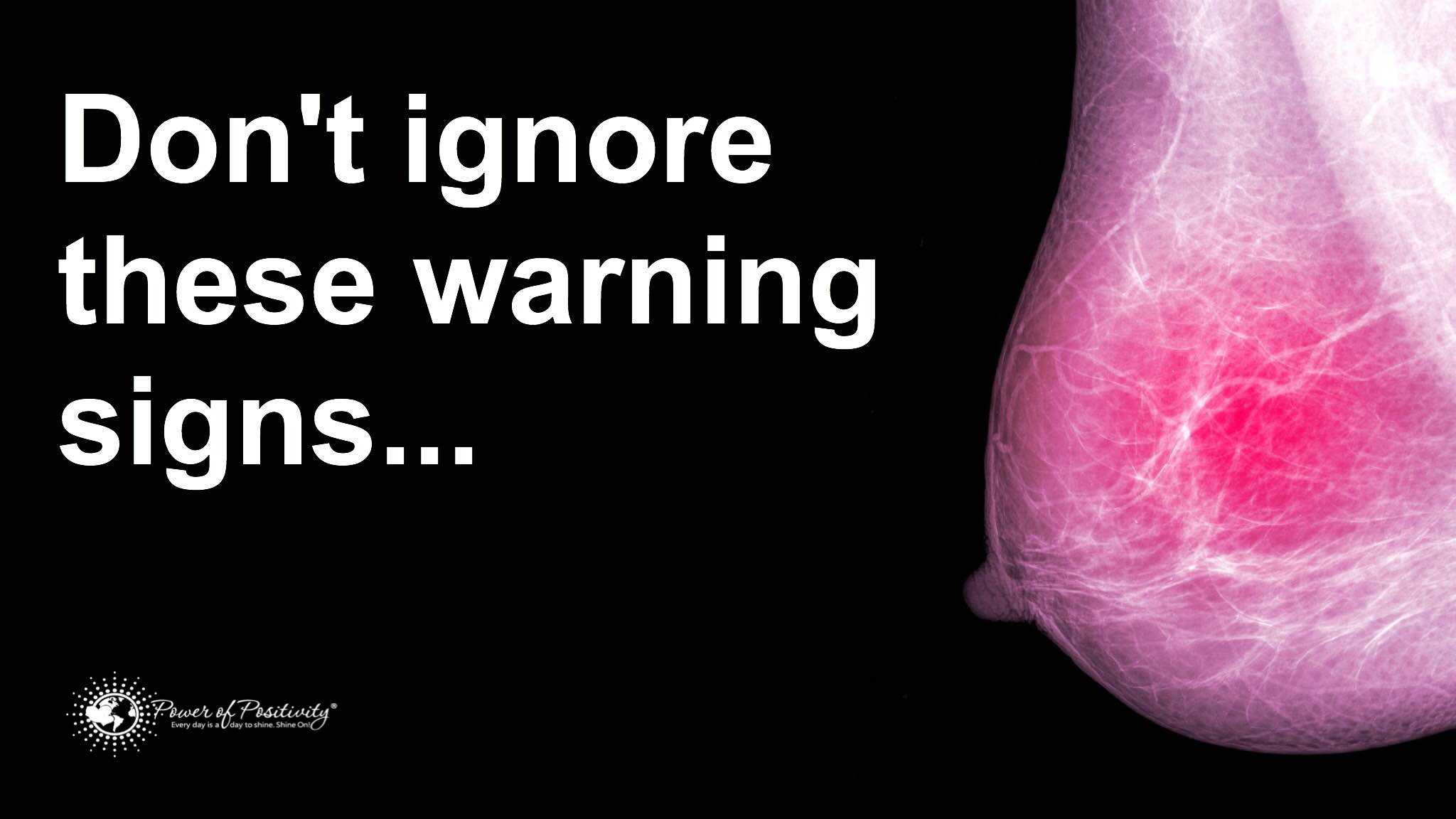
When is a biopsy necessary?
If imaging tests or FNA results are inconclusive or suggest the possibility of cancer, a biopsy may be recommended. During a biopsy, a larger sample of tissue is removed for detailed analysis. Types of breast biopsies include:
- Core needle biopsy: Removes a small cylinder of tissue
- Incisional biopsy: Surgically removes part of the lump
- Excisional biopsy: Removes the entire lump and some surrounding tissue
Treatment Options for Various Breast Lumps
The treatment approach for breast lumps depends on their underlying cause and whether they’re benign or malignant.
How are benign breast lumps managed?
For many benign breast lumps, treatment may not be necessary. Management options for benign lumps include:
- Watchful waiting: Monitoring the lump for changes over time
- Hormonal therapies: Such as birth control pills to manage fibrocystic changes
- Dietary modifications: Reducing salt and caffeine intake to minimize fluid retention
- Pain management: Over-the-counter pain relievers for discomfort
- Aspiration: Draining fluid from large, painful cysts
What are the treatment approaches for cancerous breast lumps?
If a breast lump is diagnosed as cancerous, treatment typically involves a multidisciplinary approach. Common treatment modalities include:

- Surgery: To remove the tumor and potentially affected lymph nodes
- Radiation therapy: To destroy any remaining cancer cells after surgery
- Chemotherapy: Systemic treatment to kill cancer cells throughout the body
- Hormonal therapy: For hormone receptor-positive cancers
- Targeted therapies: Drugs that target specific characteristics of cancer cells
The specific treatment plan will depend on factors such as the cancer stage, type, and the patient’s overall health and preferences.
Preventive Measures and Breast Health Maintenance
While not all breast lumps can be prevented, there are steps you can take to maintain breast health and increase the likelihood of early detection if issues do arise.
What lifestyle factors can promote breast health?
Several lifestyle choices can contribute to overall breast health:
- Maintaining a healthy weight
- Regular exercise
- Limiting alcohol consumption
- Avoiding smoking
- Eating a balanced, nutrient-rich diet
How important are regular screenings?
Regular breast cancer screenings are crucial for early detection. Current guidelines recommend:
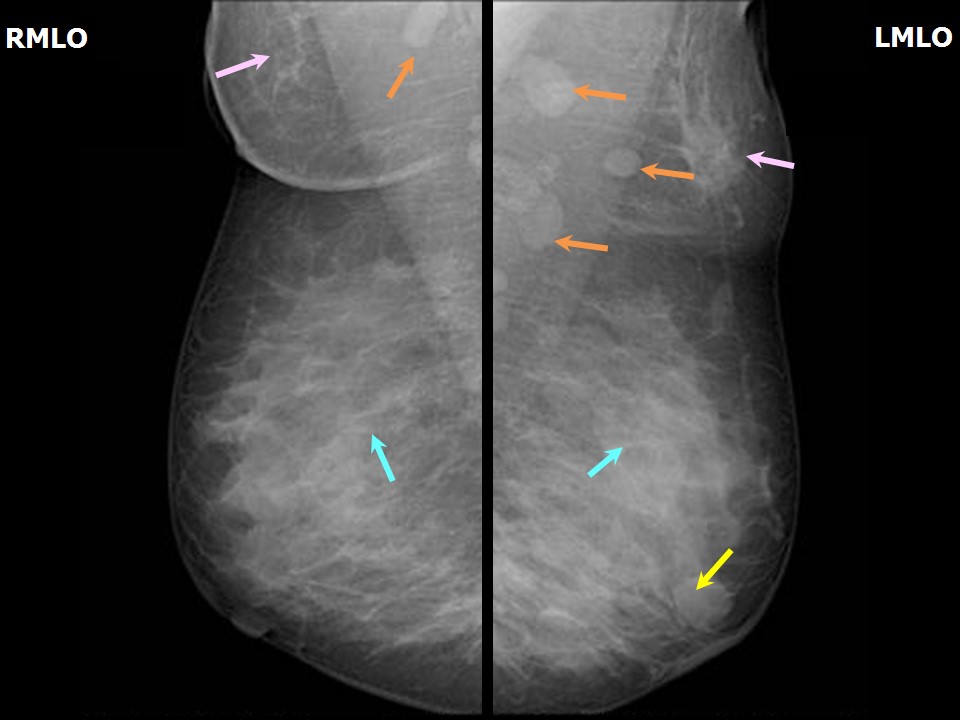
- Women aged 40-44: Option to start annual mammograms
- Women aged 45-54: Annual mammograms
- Women 55 and older: Mammograms every 1-2 years, continuing as long as overall health is good
Women at higher risk due to family history or genetic factors may need to start screenings earlier or have more frequent examinations.
Can breast lumps be prevented?
While it’s not possible to prevent all breast lumps, some strategies may help reduce their occurrence:
- Managing hormonal fluctuations through birth control or hormone therapy
- Wearing well-fitted, supportive bras to minimize breast tissue strain
- Avoiding unnecessary exposure to radiation and environmental toxins
- Practicing good breast hygiene to prevent infections
Remember, breast awareness is key. Familiarize yourself with your normal breast tissue and promptly report any changes to your healthcare provider.
When to Worry About Breast Lumps
You’re in the shower, conducting your monthly breast self-exam. Suddenly your hand freezes. You’ve found a lump. Now what?
First, don’t panic — 80 to 85 percent of breast lumps are benign, meaning they are noncancerous, especially in women younger than 40. Not only that, but if you’re of an age to be having regular mammograms, and if those mammograms have been negative, the odds are even better that your palpable (capable of being felt) lump is not cancer.
“I tell women that years before they ever experience a palpable lump we will have seen something on their screening mammogram,” says Steven R. Goldstein, MD, an obstetrician and gynecologist and a professor of obstetrics and gynecology at NYU Langone Medical Center in New York City.
Even armed with that knowledge, it’s hard not to worry if you find a lump. At the very least, you’ll have questions. How do you differentiate between a lump that is breast cancer and one that is benign? What causes benign breast lumps? And do they go away on their own?
RELATED: Speaking Cancer: A Glossary of Formal and Informal Terms Used to Describe Cancer Tests, Treatment, Patients, and More
How To Spot Changes In Your Breasts
Breast Lumps: Why Size, Movability, and Pain Matter
Your breasts are made up of fat, nerves, blood vessels, fibrous connective tissue, and glandular tissue, as well as an intricate system of milk-producing lobules (where milk is made), and ducts (thin tubes that carry milk to the nipple). This anatomy in and of itself creates a lumpy, uneven terrain.
This anatomy in and of itself creates a lumpy, uneven terrain.
A lump in the breast distinguishes itself from this background of normal irregularities. Harmless breast lumps can be solid and unmovable, like a dried bean; or movable, soft, and fluid-filled — you can roll it between your fingers like a grape. A lump may be pea-size, smaller than a pea, or even several inches across, although this larger size is rare.
What typically differentiates a benign breast lump from a cancerous breast lump is movement. That is, a fluid-filled lump that rolls between the fingers is less likely to be cancerous than a hard lump in your breast that feels rooted in place.
Another rule of thumb has to do with pain. Breast cancer does not usually cause pain. Benign conditions sometimes do, although there are exceptions to this rule as well. For instance, a rare form of breast cancer, inflammatory breast cancer, may cause symptoms such as aching, tenderness, pain, or burning in the breast.
The only way to know the status of a lump for sure is through medical tests, such as an ultrasound, a mammogram, or a fine needle aspiration (FNA), in which your doctor uses a tiny needle to extract a bit of the lump for laboratory examination.
Not all benign breast lumps will require additional testing, at least not right away. If you find what appears to be a fluid-filled cyst during your menstrual period, for instance, your doctor may want to check your breast again at the end of your period to see if the cyst has disappeared. If the cyst goes away, you and your doctor will know your lump was indeed benign and related to the hormonal fluctuations associated with menstruation.
RELATED: What Is a Skin Lump? Symptoms, Causes, Diagnosis, Treatment, and Prevention
Common Causes of Benign Breast Lumps
Most benign breast lumps and conditions are directly related to your menstrual cycle, to fluctuations in your hormones, and to the fluid buildup that comes with your monthly period. Other benign breast lumps and conditions may be related to plugged milk ducts, infections, or even breast injuries. The risk for benign breast conditions increases for women who have never had children and those who have a history of irregular menstrual cycles or a family history of breast cancer.
Other benign breast lumps and conditions may be related to plugged milk ducts, infections, or even breast injuries. The risk for benign breast conditions increases for women who have never had children and those who have a history of irregular menstrual cycles or a family history of breast cancer.
Here are some of the most common benign breast conditions.
Fibrocystic changes These changes cause a general lumpiness that can be described as “ropy” or “granular,” and affect at least half of all women. Symptoms of fibrocystic change include tender, fibrous, rubbery tissue; a thickening of tissue; or a round, fluid-filled cyst. These changes, which are related to hormonal fluctuation, may increase as you approach middle age and disappear with menopause. Sometimes doctors recommend limiting salt and caffeine consumption to ease fluid buildup. Birth control pills may also ease symptoms.
Cysts Cysts are round or oval sacs, often measuring one to two inches across. They may be tender to the touch and filled with fluid. They may come and go with your menstrual period, becoming larger and more tender at the beginning of your period and disappearing at the end. Your doctor may order an ultrasound or a fine needle aspiration to make sure it’s a cyst and not something else. In very rare cases, when a cyst is particularly large or painful, your doctor may use a needle to withdraw and reduce the fluid inside it. Cysts generally affect women between ages 35 and 50.
They may be tender to the touch and filled with fluid. They may come and go with your menstrual period, becoming larger and more tender at the beginning of your period and disappearing at the end. Your doctor may order an ultrasound or a fine needle aspiration to make sure it’s a cyst and not something else. In very rare cases, when a cyst is particularly large or painful, your doctor may use a needle to withdraw and reduce the fluid inside it. Cysts generally affect women between ages 35 and 50.
Fibroadenoma These benign lumps occur primarily in young girls and women in their teens and twenties. Fibroadenomas are more common in those who use birth control pills before age 20. They range in size from microscopic to several inches across, are movable under the skin, and are round and hard like a marble. Your doctor may opt to identify it via FNA or biopsy, or removal of the lump. If the fibroadenoma shrinks or doesn’t grow over time, and your doctor is sure of the diagnosis, he or she may decide to simply leave it alone.
Fat necrosis This occurs when fatty breast tissue is damaged by injury to the breast, resulting in the formation of round, firm lumps. It’s more common in women with large breasts, particularly in obese women. Your doctor will most likely watch the lump through several menstrual cycles and may decide to remove it surgically. Sometimes the necrosis will produce what is called an oily cyst, which your doctor can drain with a needle.
Nipple discharge Sometimes women experience nipple discharge with or without a breast lump. The color of nipple discharge can vary from yellow to green. A clear to milky discharge may mean a hormonal malfunction. Greenish black discharge could be related to duct ectasia, a narrowing or blockage of the duct. A bloody discharge can mean cancer but is more likely to be due to injury, infection, or a benign tumor. Your doctor may study the fluid under a microscope to determine the problem.
Mastitis An infection of the milk duct, mastitis can create a lumpy, red, and warm breast, accompanied by fever. It occurs most commonly in women who are breastfeeding, but can occur in non-breastfeeding women as well. Treatment involves warm compresses and antibiotics. Because these symptoms are similar to inflammatory breast cancer, if they occur in a non-breastfeeding woman a doctor may want to do a biopsy.
It occurs most commonly in women who are breastfeeding, but can occur in non-breastfeeding women as well. Treatment involves warm compresses and antibiotics. Because these symptoms are similar to inflammatory breast cancer, if they occur in a non-breastfeeding woman a doctor may want to do a biopsy.
Other, less-common conditions Some medical conditions cause breast lumps, including hyperplasia, which is an overgrowth of cells in the breast ducts or lobules; adenosis, which causes enlarged lobules; intraductal papilloma, a wart-like growth of gland tissue that grows in the duct; and lipoma, which is a benign fatty tumor.
RELATED: Real Stories From Women With Metastatic Breast Cancer
Signs of Cancerous Breast Tumors
Though most breast lumps are benign, some do turn out to be cancerous. If a tumor is cancerous, it will continue to grow and invade normal nearby tissue. If it isn’t treated, it can spread to other areas in the body.
Most cancerous breast tumors first appear as single, hard lumps or thickening under the skin. Other signs to watch for include a change in nipple appearance, nipple secretions, nipple tenderness, and a dimpling or puckering of the skin.
About half of cancerous breast lumps appear in the upper, outer quadrant of the breast, extending into the armpit. About 18 percent of breast cancer tumors show up in the nipple area. Around 11 percent are found in the lower quadrant, and 6 percent are located in the lower, inner quadrant.
RELATED: What Is an Ovarian Cyst? Symptoms, Causes, Diagnosis, Treatment, and Prevention
If You Find a Breast Lump
Most benign breast conditions are treatable, and some will even go away on their own, but it’s best to let your doctor be the one to tell you that. All breast lumps should be evaluated by a medical professional, who will help you decide how to proceed. Because of the fluctuations in breast tissue that occur in response to hormonal changes throughout the month, it’s typically a good idea to do a self-exam at the same point every month, such as a few days after the end of your menstrual cycle.
Additional reporting by Julie Marks.
What to Know About the New Mammogram Guidelines
Breast cancer screenings should begin at age 40, not 50, according to new recommendations from a government advisory panel. An expert explains.
By Becky Upham
Breast Tumors and Lumps | Causes, Detection And More | Beaumont
If you find a lump in your breast, your first thought might be “breast cancer.” But most breast lumps are benign, which means they are non-cancerous. You might be surprised to learn that breast lumps can occur in men and women, girls and boys. All humans have breast tissue, and lumps can form within any breast tissue. Many lumps appear and disappear during times of hormonal fluctuation, like during puberty. Breast lumps are not uncommon in girls or boys during puberty.
Breast lumps are masses that develop in breast tissue. Not all lumps are the same. They vary in look and feel.
If you have a breast lump, you might notice:
- an obvious lump with defined borders, kind of like a pea or a grape, depending on the size of the lump
- a firm or hard area in your breast
- an area of thickened tissue in the breast that feels different than the tissue around it
- accompanying breast changes, like skin redness or dimples
- a new difference in the size or shape of one breast, so one is now larger (or smaller) than the other
In addition to the breast lump, you might notice nipple changes, nipple discharge, or breast pain or tenderness. The pain may increase at certain times during your menstrual cycle.
Causes of breast lumps
There are many possible causes of a breast lump, including: breast cancer
- breast cysts
- fibrocystic breasts
- fibroadenoma
- trauma or injury to the breast
- mastitis
- lipoma
- intraductal papilloma
- milk cyst
How are breast lumps and tumors detected?
Often, breast lumps and tumors are found during annual breast exams or monthly breast self-exams.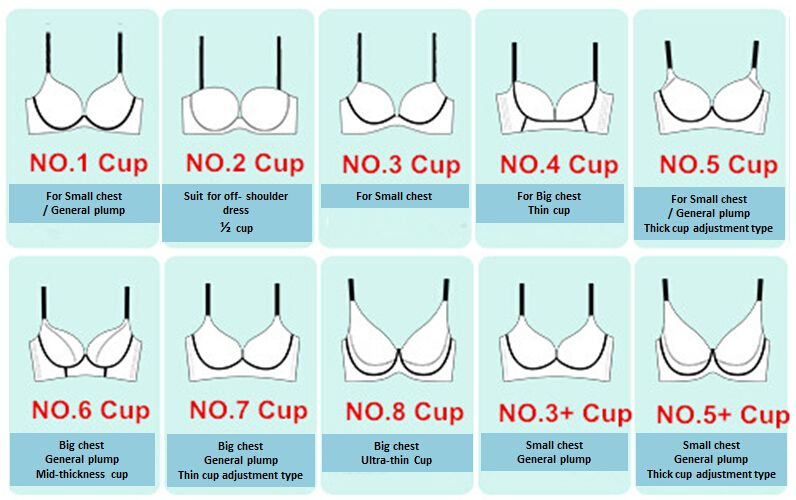 That’s why it’s so important for you to see your doctor every year to be checked for signs of breast cancer and other gynecologic cancers. You should also perform breast self-exams every month. This is the best way to detect changes in your breast that could require medical attention.
That’s why it’s so important for you to see your doctor every year to be checked for signs of breast cancer and other gynecologic cancers. You should also perform breast self-exams every month. This is the best way to detect changes in your breast that could require medical attention.
Breast lumps and tumors may also be found during screening or diagnostic mammograms, or just incidentally, like when you put on deodorant, you might notice a lump in your armpit near your breast.
How can you tell if a breast lump is cancerous or benign?
There’s no way to tell for sure whether a breast lump is benign without some sort of testing; however, about 80 percent of breast lumps are non-cancerous, and there are some characteristics of benign breast lumps that help doctors make a diagnosis.
Some of the tests your doctor may perform or order in addition to doing a physical exam of your breasts are:
- a diagnostic mammogram
- breast ultrasound
- breast MRI
- a breast biopsy of the affected breast tissue
- fine needle aspiration of fluid inside the lump
These tests will help determine the type of lump or, if the lump is malignant, what type of cancer you have.
When should you see a doctor about a lump in your breast?
Breast lumps are not always cancer, and they are not always cause for alarm. You should know the signs and symptoms of breast cancer and should perform breast self-exams every month to check for lumps or any other changes in your breast tissue.
And while a breast lump is not likely to be cancerous, it’s still important to have it evaluated by your physician.
Make an appointment with a Beaumont doctor for a breast lump evaluation, especially if:
- the lump seems fixed or feels firm
- the lump has not gone away in four to six weeks
- you have skin changes on your breast in addition to the lump (changes like redness, dimpling, crusting, or puckering)
- one area of your breast is obviously different from the rest
- you have breast pain
- you have unexplained bruising on your breast
- you have nipple discharge of any kind
- your nipple is inverted or abnormally positioned you are noticing lumps in your armpit that are getting bigger
For a referral to a Beaumont breast care doctor, call 800-633-7377
Symptoms of breast cancer: first signs, causes and stages
Symptoms of breast cancer manifest differently in different people. If you notice any of the symptoms listed below, you should consult a doctor for an examination.
If you notice any of the symptoms listed below, you should consult a doctor for an examination.
The most common symptom of breast cancer is a painless lump in the chest or armpit. By conducting regular breast self-exams, you memorize what structure your breasts have, which means you will immediately notice any change. Most breast lumps are benign (eg cysts), but every lump needs to be examined!
Sign up for a consultation today!
On This Page:
- The Most Common Symptoms of Breast Cancer – Remember Them!
- Quick access to examination and treatment
- Lump in the breast or armpit
- Change in the size or shape of the breast
- Pain, swelling, tingling
- Change in the skin
- Nipple changes
- Other symptoms
9 0017
- What should I do if I suspect a tumor in my breast?
- Additional examinations
- Regular breast self-examination
- Similar articles
- Our doctors
- Patient testimonials
- Are you thinking about examination or treatment abroad?
Are you thinking about examination or treatment abroad?
Post your question here and the Helena Clinic mammologist will answer it.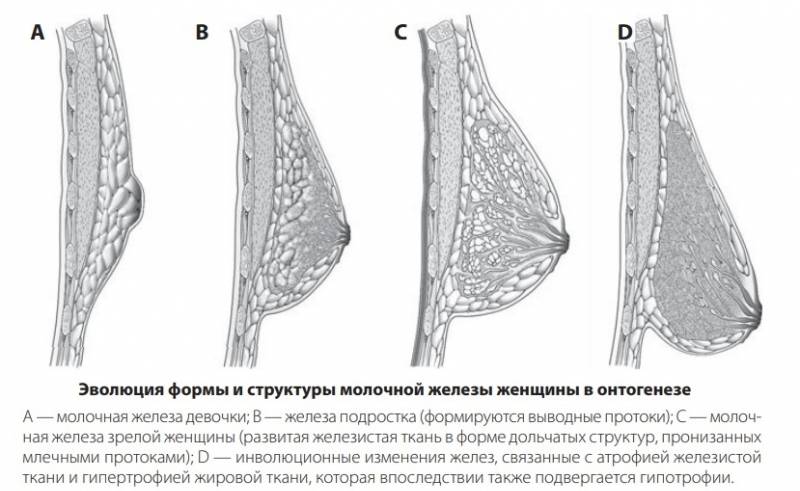 Whatever country you are in, we will be happy to give you professional advice.
Whatever country you are in, we will be happy to give you professional advice.
The most common symptoms of breast cancer – remember them!
The most common symptoms of breast cancer:
- lump or lump in the chest or armpit
- chest skin retraction
- change in the size, shape or density of the breast
- bloody or any other discharge from the nipple
- rash on areola
- nipple retraction
- breast skin change
- breast or nipple pain, breast swelling
- breast engorgement outside of pregnancy
If you experience any of these symptoms, contact your doctor immediately. In case of any incomprehensible symptoms and seals, it is imperative to undergo an examination: mammography and ultrasound examination of the mammary glands.
Quick access to examination and treatment
- At Helena Clinic you can get a quick consultation if you have any of the above breast symptoms or have been diagnosed with breast cancer.

- Helena Clinic is the leading Finnish clinic for the treatment of breast cancer. Many years of experience, European quality standards and an individual approach provide the best treatment results, and Russian-speaking support in the clinic allows patients to feel comfortable.
- Helena Clinic has an office in St. Petersburg, where we advise patients on treatment in Finland. A proposal for diagnosis and treatment is made free of charge within 1-3 days. Treatment can be started immediately.
+358 50 570 8720
Lump in the breast or armpit
The most common symptom of breast cancer is a lump in the breast or armpit. Sometimes the tumor can be seen visually, sometimes – only when probing the chest. Sometimes a lump is found in the armpit – this may indicate the spread of cancer to the lymph node.
It must be remembered that not all lumps in the breast mean cancer. Often seals are benign cysts.
Change in size or shape of the breast
Breast cancer does not always show up as a lump. Symptoms may also include changes in the size, shape, and density of the breasts.
Symptoms may also include changes in the size, shape, and density of the breasts.
Indrawings, thickening or painful areas may form on the skin of the breast.
Pain, swelling, tingling
Breast cancer may be indicated by sensations in the breast such as burning, itching or tingling. The lump itself is usually painless, but may cause tingling, hypersensitivity, or stabbing pain.
Changes in the skin
Breast cancer can manifest itself in changes in the skin of the breast. One of the signs is the so-called “orange peel”.
Sometimes the color of the skin of the breast changes – an unusual redness appears, the skin is pulled inward.
Nipple changes
Any changes in the nipple area can be a sign of breast cancer. Cancer may present with nipple indrawing or clear or bloody discharge from the nipple.
An ulcer or rash on the nipple that does not heal may indicate breast cancer.
Sign up for a consultation today!
Other symptoms
Breast cancer may present with other symptoms. It is very important to conduct regular breast self-examination in order to notice the slightest changes in time. Finland has an effective screening program for the early detection of breast cancer. All Finnish women aged 50 to 69 are invited to have a mammogram every 2 years. More than 80 percent of all invitees take part in the screening, and it is within the framework of screening that two-thirds of breast cancer cases are detected.
It is very important to conduct regular breast self-examination in order to notice the slightest changes in time. Finland has an effective screening program for the early detection of breast cancer. All Finnish women aged 50 to 69 are invited to have a mammogram every 2 years. More than 80 percent of all invitees take part in the screening, and it is within the framework of screening that two-thirds of breast cancer cases are detected.
What should I do if I suspect a tumor in my breast?
Have you examined your breasts yourself?
It’s great if you’ve already got into the habit of doing regular breast self-exams. When you examine your breasts every month, you memorize their normal texture and density. If at one of the self-examinations you notice that something has changed, you can apply for additional studies in time and, if necessary, start treatment.
If you still don’t know why and how to conduct breast self-examination, read our article and watch the training video here.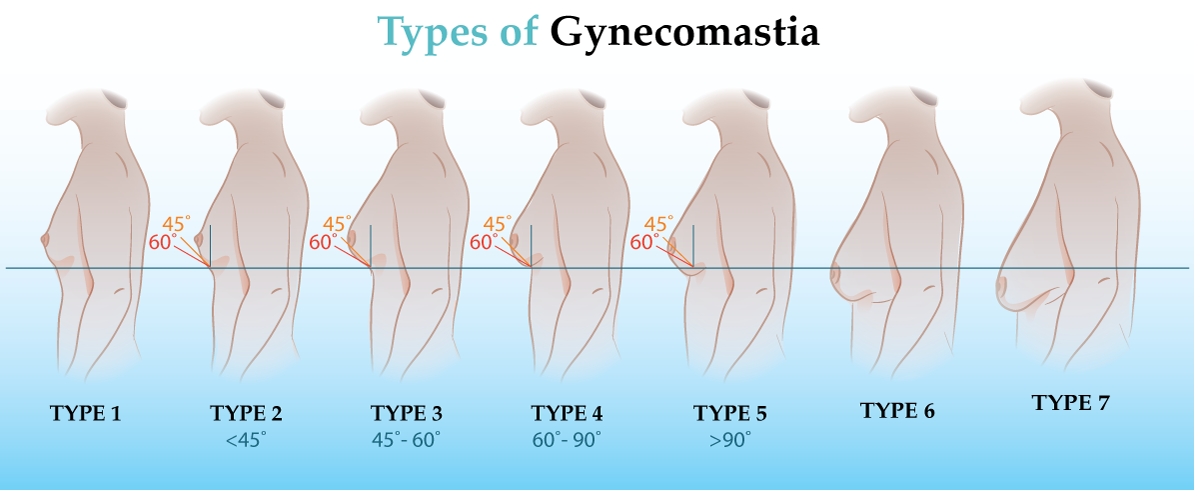
What should you do if you find a lump yourself?
The main thing is not to worry and not to be afraid, but to consult a doctor. If during self-examination you notice something unusual in the structure of your mammary glands that was not there before, the first step to health is to make an appointment with a mammologist. A good doctor should conduct a clinical examination and determine if you need further research. The seal in the chest may well be a cyst or other benign formation. In any case, the diagnosis should not be postponed for a long time – it will either relieve anxiety or allow treatment to begin as early as possible.
In this article, mammologist and oncosurgeon Helena Puonti explains why all unclear symptoms and suspicious breast masses should be investigated.
Have you been to see a doctor?
Palpation is a method of examination during which the doctor palpates (carefully feels) the mammary glands to determine if there are any abnormalities in their structure. This is the first study that is performed as part of the diagnosis of diseases of the mammary glands. Based on palpation, the doctor decides whether it is necessary to refer the patient to mammography, ultrasound, or both studies at once.
This is the first study that is performed as part of the diagnosis of diseases of the mammary glands. Based on palpation, the doctor decides whether it is necessary to refer the patient to mammography, ultrasound, or both studies at once.
Have you already had a breast ultrasound?
Breast ultrasound is best as a baseline study for patients under 40 years of age because their breast tissue is too dense to be clearly seen on mammography.
What was found on breast ultrasound?
If the radiologist confirms that there are no alarming changes on the ultrasound (provided that you were previously examined by a mammologist), you can exhale with relief and continue regular self-examinations.
Every woman should have a regular breast ultrasound.
If the radiological report recommends additional tests, the referral mammologist will explain what to do next. Most often, the next step will be a mammogram.
Have you already had a mammogram?
Along with ultrasound, there is a second basic study that provides important information about the structure and changes of the mammary glands – this is mammography.
Mammography is the “gold standard” of investigations to be performed if any change suspected of being malignant is detected.
If a suspicious area is seen on mammograms, a biopsy is taken from it so that no malignancy is missed. The earlier cancer is detected, the more gentle the operation to remove it will be and the higher the possibility of a full recovery.
If mammography, breast ultrasound and clinical examination by an experienced mammologist do not confirm anything suspicious, you can breathe a sigh of relief and continue regular self-examinations.
Have you had a biopsy before?
Any suspicious breast changes should be biopsied to rule out cancer. Biopsy tissue is examined under a microscope.
If no malignant cells are found in the biopsy, it is most often a benign growth of the connective tissue. Such areas do not need to be removed if they do not interfere (for example, do not cause pain when wearing a bra). If a benign cyst was found on the study, it can be punctured – that is, fluid is removed from it with a thin needle.
If a biopsy confirms a malignant tumor, surgical removal of the tumor is most often the first step in treatment. To plan the operation, it is important to determine whether the malignant cells have spread to the lymph nodes in the armpit. If there are enlarged lymph nodes in the armpit, then a biopsy is also taken from them.
Have you had an axillary lymph node test before?
Lymph nodes perform a very important function – they delay the spread of malignant cells.
The first lymph nodes that malignant cells meet on the way from the tumor to the armpit are called “sentinel” lymph nodes. Their task is to delay and, if possible, destroy cancer cells that seek to spread throughout the body. The study of “sentinel” lymph nodes allows you to determine whether they contain malignant cells, which is important for planning surgical treatment.
What was found on the sentinel lymph nodes?
If the axillary lymph nodes are “clean”, that is, they do not contain malignant cells, then surgery to remove the axillary lymph nodes is not required. Radioisotope study of “sentinel” lymph nodes is designed to confirm the result of the biopsy.
Radioisotope study of “sentinel” lymph nodes is designed to confirm the result of the biopsy.
If metastases are found in the armpit, that is, lymph nodes affected by malignant cells, this means that they must be removed during surgery in order to remove malignant cells from the body. After surgery to remove axillary lymph nodes, it is very important to pay attention to the gentle recovery of the hand so that its function is not affected.
Have you had cancer surgery before?
If you have already had an operation, this is good news, because the most important thing for your future recovery has already been done.
Cancer behaves very differently, so there are different options for surgery to remove a malignant tumor with different results. In most cases, if the tumor is small relative to the size of the breast, organ-sparing surgery can be performed. In other cases, it is necessary to perform a mastectomy – that is, to remove the entire mammary gland.
Will I need chemotherapy and radiotherapy?
After surgery to remove breast cancer, so-called adjuvant therapy is usually given. Its task is to destroy malignant cells that could still remain in the body. After the operation, all removed tumor cells are carefully examined by a pathologist. The pathohistological conclusion gives an idea of the extent and aggressiveness of the tumor. Based on this conclusion, the oncologist plans further treatment. It can be chemotherapy, radiation or hormonal therapy.
Its task is to destroy malignant cells that could still remain in the body. After the operation, all removed tumor cells are carefully examined by a pathologist. The pathohistological conclusion gives an idea of the extent and aggressiveness of the tumor. Based on this conclusion, the oncologist plans further treatment. It can be chemotherapy, radiation or hormonal therapy.
Can breasts be reconstructed after mastectomy?
If you have had a mastectomy and your entire breast has been removed, you may be offered several options for breast reconstruction. You can restore the breast with the help of transplantation of your own tissues, an implant placed under the skin, or using combined methods. In some cases, a so-called expander is first needed, which stretches the skin and prepares it for the implant. Sometimes breast reconstruction can be performed at the same time as surgery to remove the tumor, for example, when cancer is detected at an early stage and radiation therapy is not required after surgery.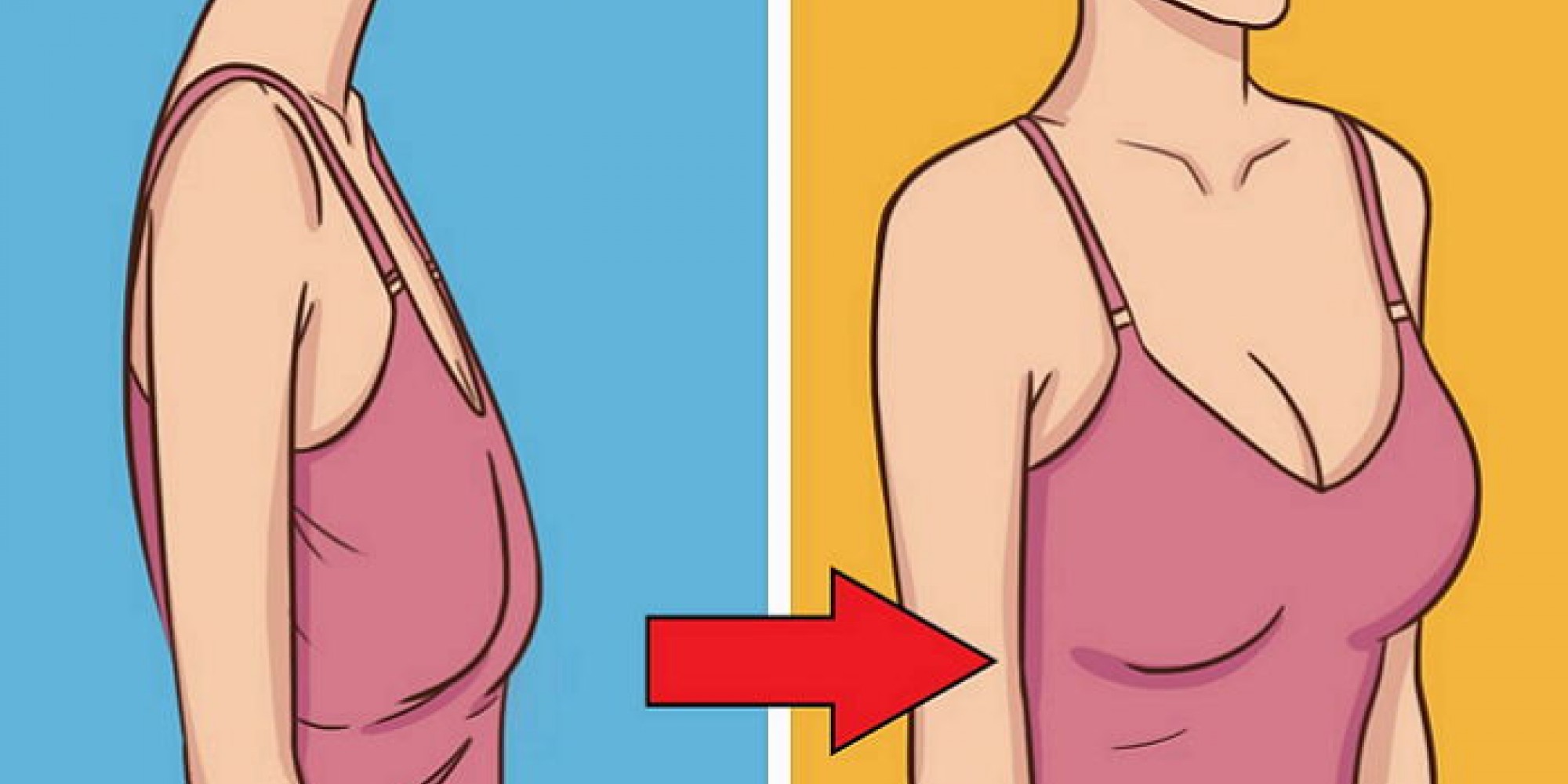
Book a consultation today!
You can contact the Helena Clinic for advice at any stage of your breast cancer treatment. We will help you navigate the diagnosis, plan a surgical treatment or get an expert opinion.
Additional Testing
If you have been diagnosed with or suspect breast cancer based on the symptoms listed above, you can make an appointment with Dr. Helena Puonti – quickly and without a referral. At the appointment, a clinical examination will be carried out, after which additional studies may be prescribed to clarify the diagnosis: ultrasound of the mammary glands, mammography, MRI, if necessary, a biopsy.
Regular breast self-examination
Regular breast self-examination helps to detect breast cancer at an early stage. Self-examination should be carried out on a regular basis – so you will know the structure of your breasts well and easily notice even slight changes. Read more about how to properly conduct a breast self-exam here.
Our doctors
Helena Puonti
Honored microsurgeon, leading Finnish plastic surgeon, breast oncologist. She was awarded a medal by the Finnish Cancer Foundation as the best oncologist.
Esa Männisto
Oncologist, awarded the title of the Best Oncologist in Finland in 2005.
Kalevi Pulkkanen
Kalevi Pulkkanen, one of our highly trained oncologists, specializes in chemotherapy and radiotherapy for the treatment of breast, lung and prostate cancer.
Read more
The impression of the clinic is very good, everything is very clean; Helena is very friendly and professional.
Read more Arina, Petrozavodsk
Despite the brevity of the text, my gratitude is enormous! I was in Savonlinna for breast reconstruction surgery.
Read more Galina, St. Petersburg
Is mastopathy dangerous? How to take care of your breasts
There are no myths about mastopathy. Some believe that this is not a pathology at all, but just discomfort, others that it is almost a precancerous disease. Let’s find out who is right.
Let’s find out who is right.
“Let’s start with the fact that mastopathy is a benign lesion of the mammary gland,” says the surgeon, oncologist-mammologist Viktor Viktorovich Fedoseikin. “It is characterized by an overgrowth of connective tissue in the organ.” According to WHO, at least every second woman of reproductive age suffers from this disease.
Something presses and hurts
As a rule, mastopathy leads to significant discomfort, so there is practically no chance of going unnoticed. The main symptoms of the disease:
- swelling, feeling of heaviness, pain in the chest;
- breast induration;
- discharge from the nipples.
But since all the same symptoms can accompany not only benign, but also malignant diseases of the breast, it is definitely not worth leaving them unattended. Any pathological changes in the mammary gland should be monitored regularly and, if necessary, treated by specialists. And although mastopathy, due to its high prevalence, is not considered a serious disease, nevertheless it can cause the formation of nodes in the mammary gland and, unfortunately, not all patients have them benign.
And although mastopathy, due to its high prevalence, is not considered a serious disease, nevertheless it can cause the formation of nodes in the mammary gland and, unfortunately, not all patients have them benign.
Mastopathy is diagnosed on the basis of external diagnostics, as well as breast ultrasound, mammography or magnetic resonance imaging. Additional studies may be required for further treatment.
Who is more at risk
At risk for the development of mastopathy are women over 30 years of age who have a hereditary predisposition, problems with the endocrine system, suffering from hormonal disorders or diabetes. Mastopathy is often found in women with diseases of the ovaries, liver, thyroid gland, obesity and other endocrine pathologies. Also, nervous disorders can be to blame for the appearance of mastopathy. In addition to endogenous (internal) causes, there are external causes that increase the risk. Among them: late delivery or lack thereof, early interruption of breastfeeding, abortion, stress, overweight and smoking. All these circumstances can also contribute to the development of mastopathy.
All these circumstances can also contribute to the development of mastopathy.
The danger depends on the form
There are several forms of mastopathy:
- fibrous;
- cystic;
- diffuse;
- fibrocystic;
- sclerosing adenosis;
- nodal, in which clearly defined nodes are formed.
Unlike other forms, this type of disease does not belong to benign mastopathy.
I degree disease includes fibrocystic mastopathy without proliferation (cell growth), degree II – mastopathy with epithelial proliferation without atypia (this means that the connective tissue in the breast grows, but atypical cells are not observed there), and III degree – mastopathy with atypical proliferation of the epithelium. Mastopathy II and III degree are precancerous conditions.
Diffuse form of mastopathy occurs more often in young women and is considered the least dangerous. In this case, numerous small seals periodically appear in the breast tissue, which dissolve on their own with the beginning of each menstrual cycle.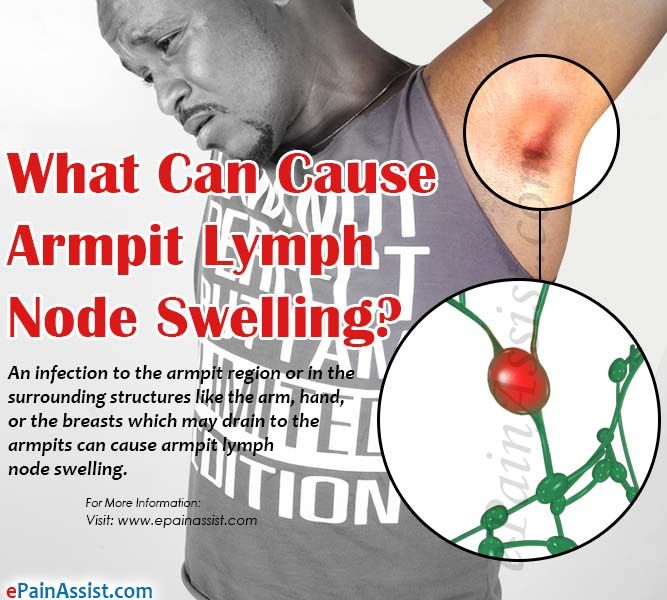 Nevertheless, this form of mastopathy should be monitored regularly and, if possible, treated. And the detection of nodular mastopathy, in which round or oval “nodules” ranging in size from a pea to a quail egg are probed in the mammary gland, may be an indication for surgery. It is believed that the presence of some forms of nodular mastopathy increases the risk of developing breast cancer by 5 times. In this case, sectoral resection is used (only nodes are removed, the mammary gland is not affected).
Nevertheless, this form of mastopathy should be monitored regularly and, if possible, treated. And the detection of nodular mastopathy, in which round or oval “nodules” ranging in size from a pea to a quail egg are probed in the mammary gland, may be an indication for surgery. It is believed that the presence of some forms of nodular mastopathy increases the risk of developing breast cancer by 5 times. In this case, sectoral resection is used (only nodes are removed, the mammary gland is not affected).
How to get treatment?
Unfortunately, there is no single pill that would treat mastopathy, since each patient has her own causes of this disease, respectively, and the treatment may be different. In one case, only dynamic monitoring is required, and in the other, hormone therapy, or iodine preparations, or antidepressants. Only a doctor can decide what exactly this or that woman needs. And not alone. To identify the cause, a number of studies are needed, and, as a rule, a whole team of specialists: an oncologist-mammologist, a gynecologist, an endocrinologist, a neurologist, a therapist, etc.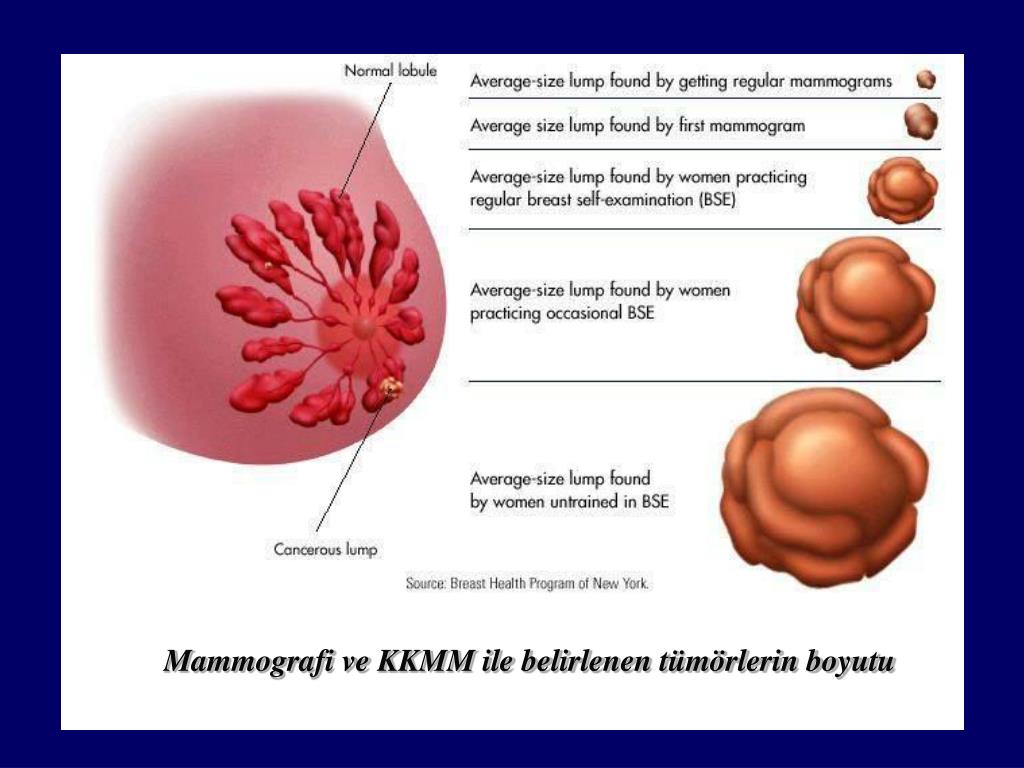
Let’s help ourselves
Despite the fact that in case of mastopathy it is absolutely necessary to see a doctor, you can do a lot for the health of the mammary glands yourself. For this it is important:
- Proper nutrition . It is important to eat the most natural food, reduce the content of sweet and starchy foods, eat more vegetables and fruits. Especially useful are cruciferous vegetables rich in antitumor substances (all types of cabbage: broccoli, white, cauliflower, Peking) and soy products.
- Taking dietary supplements and vitamins . In addition to antioxidants (vitamins A, C and E, coenzyme Q 10, lycopene), vitamin D and omega-3 and omega-6 fatty acids, it is useful to use preparations containing indole, a natural plant oncoprotector that promotes normal estrogen metabolism.
- Regular sex life . This “medicine” normalizes the female hormonal background, which protects against problems with the mammary gland and not only.



